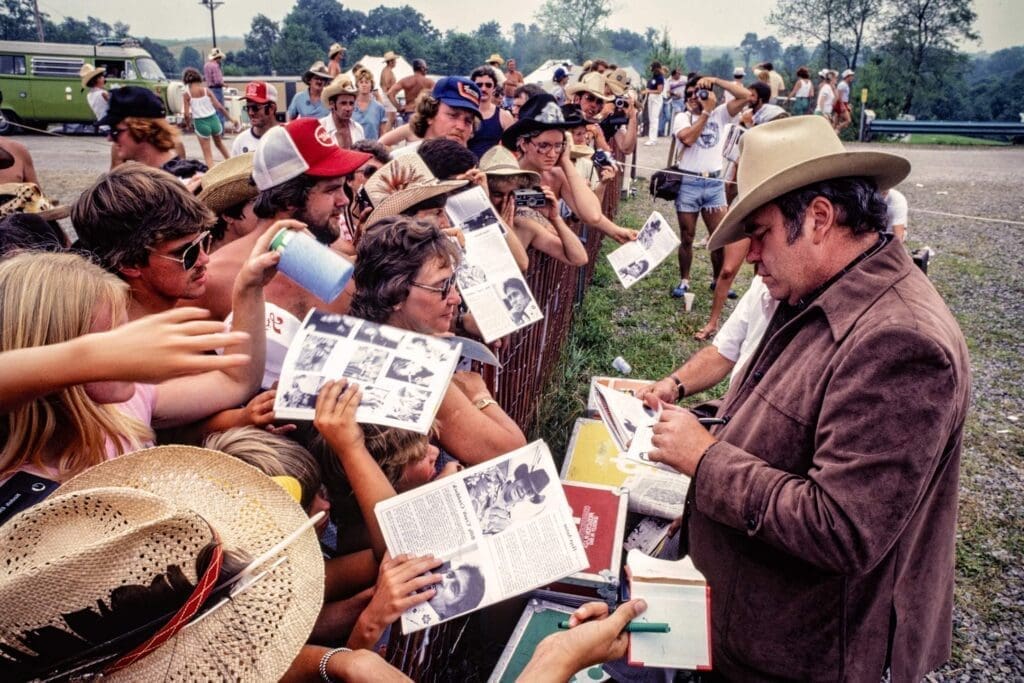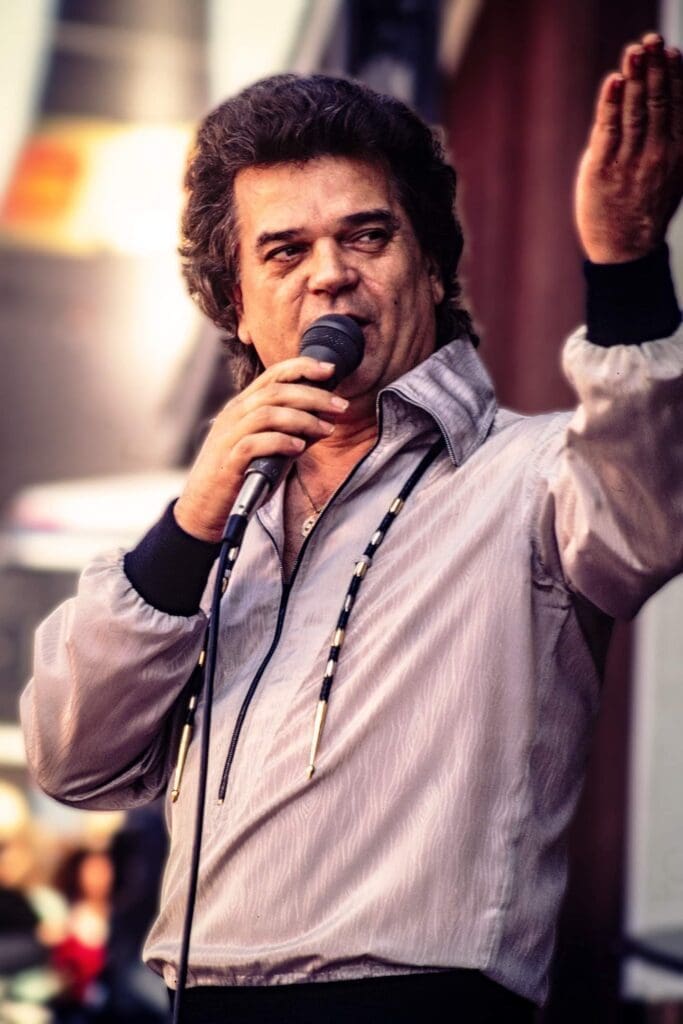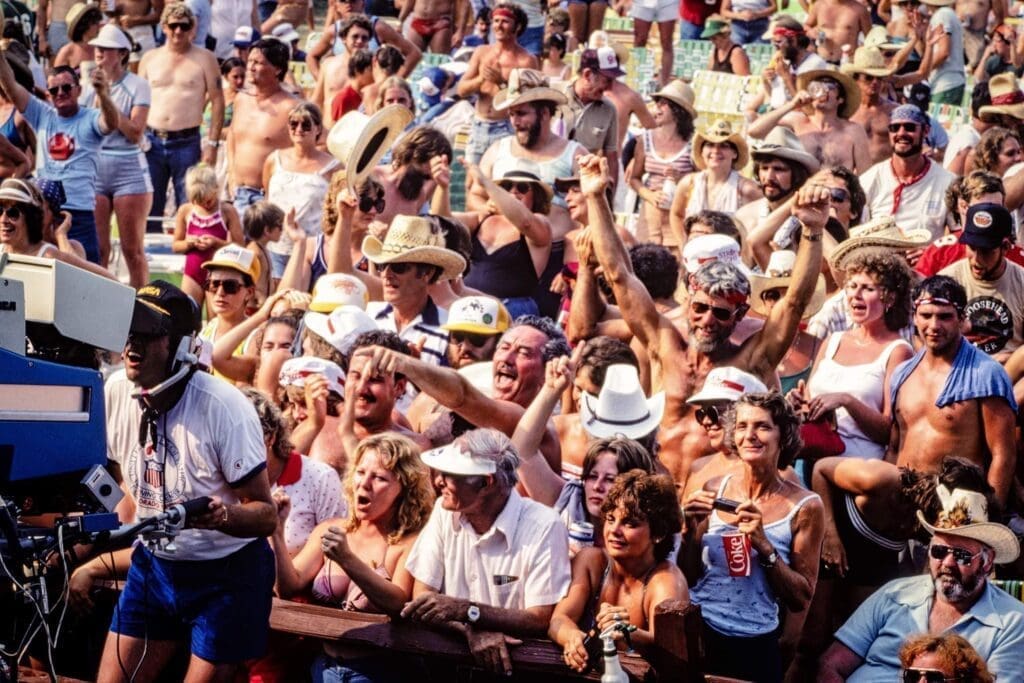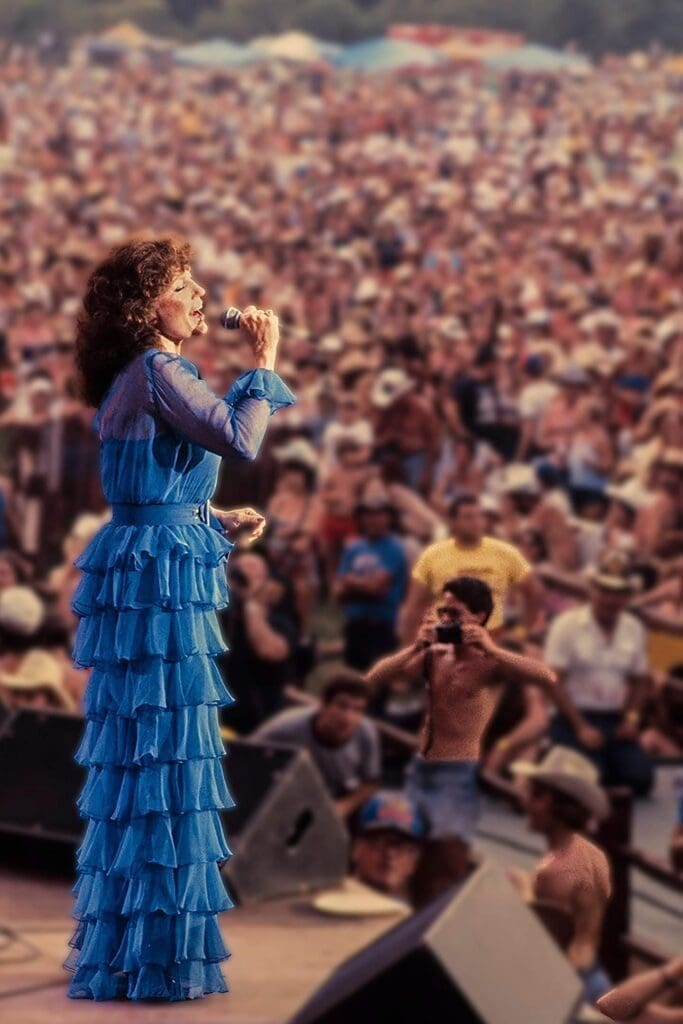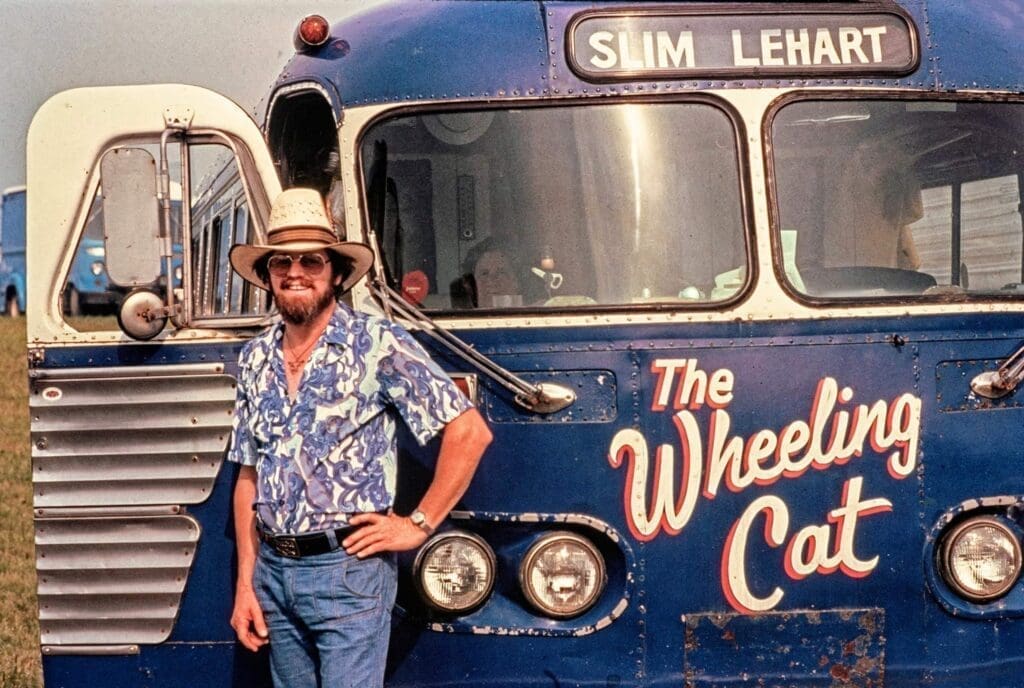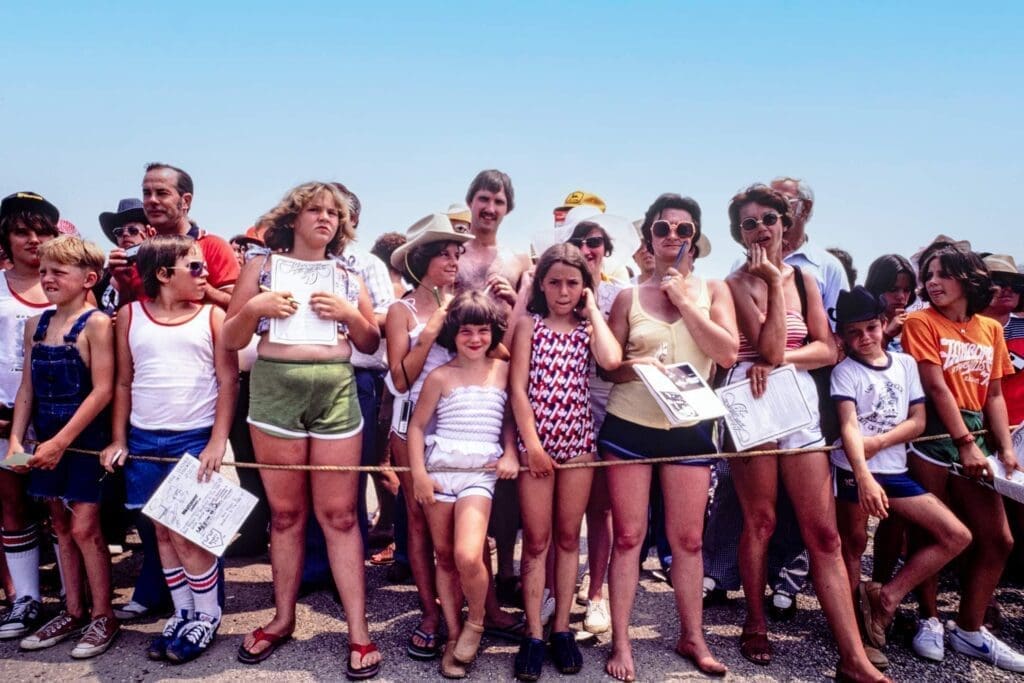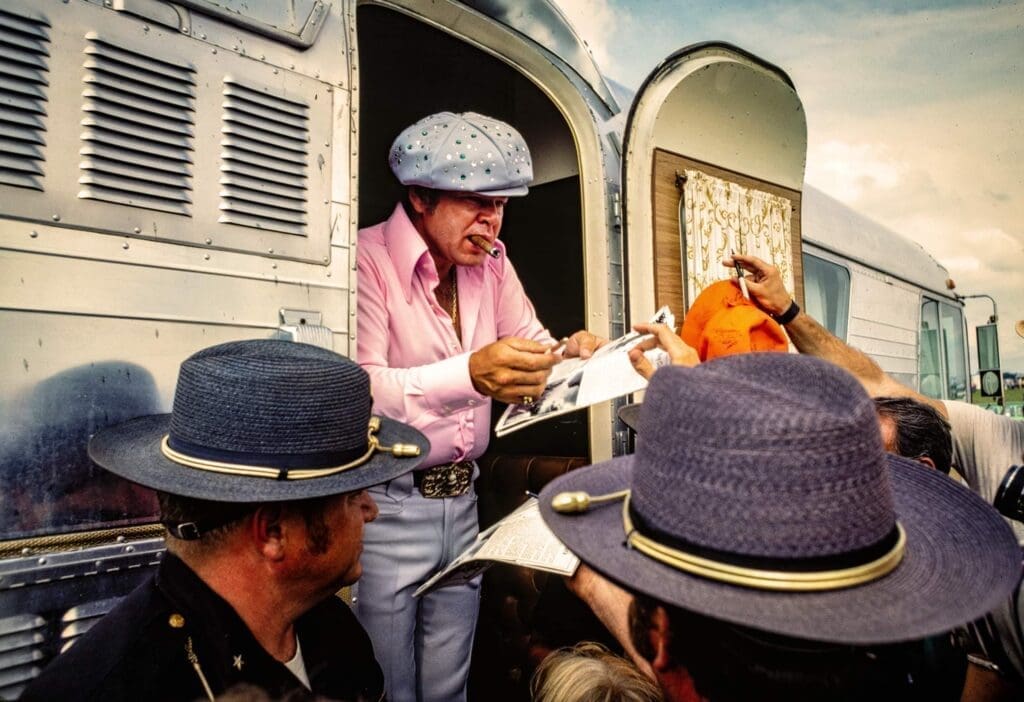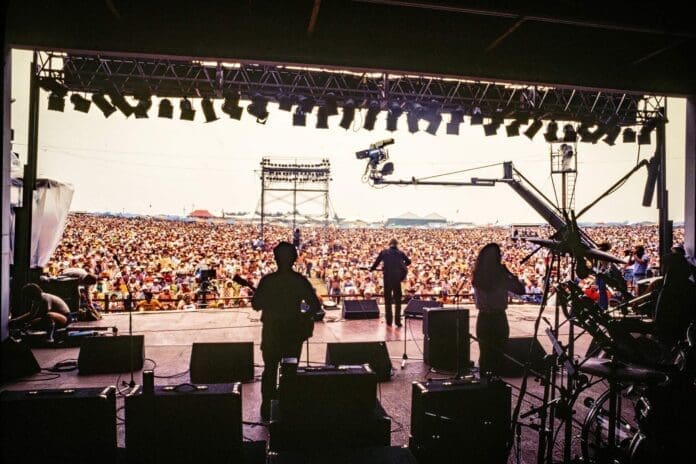
(Photos by Bill Burke)
The casket cooler. The red wagons. The redneck run. The spray bottles.
The tarps. The steak sandwiches and the buckets of greasy French fries.
And yes, the medical tents.
All became traditions during the course of the 45 years of Jamboree in the Hills, a country music festival that was inspired by Jamboree USA, a weekly radio and stage show based in Wheeling. At the Capitol Theatre, a pair of sold-out shows took place on Saturday evenings with the majority of seats occupied by those who traveled from Canada to the Friendly City in motorcoaches.
Those not making the trip to the Northern Panhandle most often listened to AM 1170 WWVA, once a 50,000-watt radio station focused on the Upper Ohio Valley and not nationally syndicated programming as it does today.
Jamboree in the Hills was a most unique event when it began as a two-day event in 1977 at Brush Run Park in Belmont County. Not only did several of the biggest country music stars perform on the same stage (Johnny Cash, Merle Haggard, and Tammy Wynette, to name a few, in 1977), but it was outdoors, and the fans were permitted to bring their own food and beverages into the show.
“It was amazing to me that so many well-known country stars would perform in there all day long one after another,” said Bill Burke, the photographer who was hired to shoot the event’s official photos between 1977-1982. “The big names would sing during the day or during the night. They would get there, roll on stage, and then get out and head to the next show. That’s what those stars had to do back then.
“Sure, there were things about being a photographer at Jamboree in the Hills that were great and not-so-great, and trust me; I slept very well after working those days,” he said. “It was two days when it first started, and it grew after that and was a really big deal for a lot of years.”
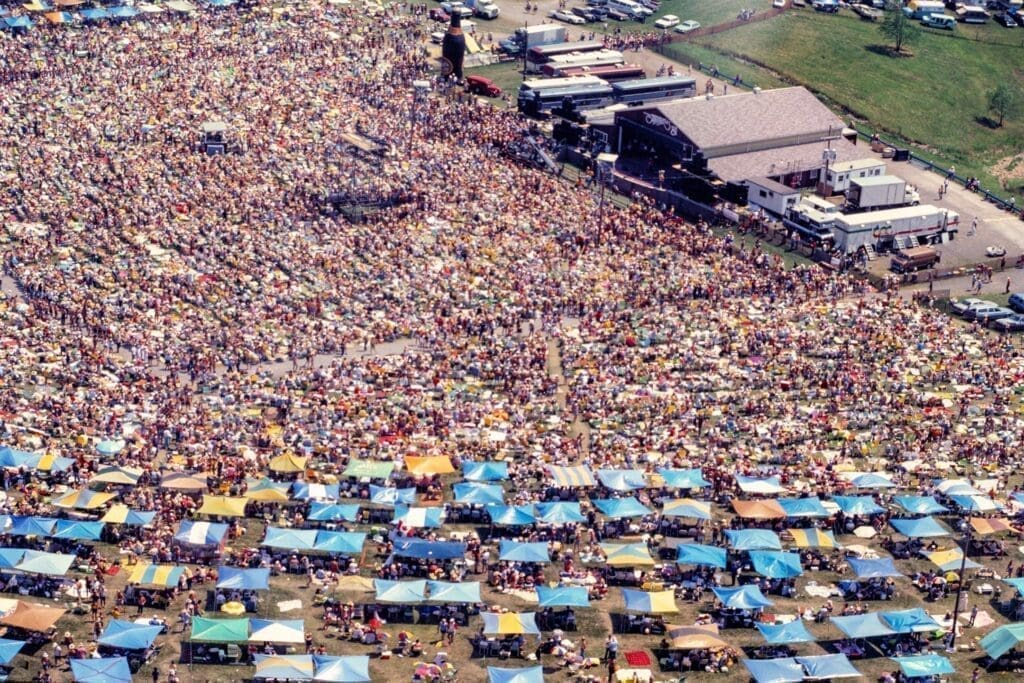
“Hiatus”
It was in November 2018 when officials of Live Nation, the parent company of Jamboree in the Hills, announced the four-day music festival would not take place in July 2019. The press release utilized the term “hiatus” because someone in the corporation was fearful to announce the complete abandonment of the annual event.
The property, the second site to host JITH during the four-plus decades, is now owned locally and has sat silent since the end of the 2018 show. Across U.S. 40 the same weekend of the year, the Blame My Roots Country Fest takes place the third weekend of July and has quadrupled in attendance since the first show in 2019.
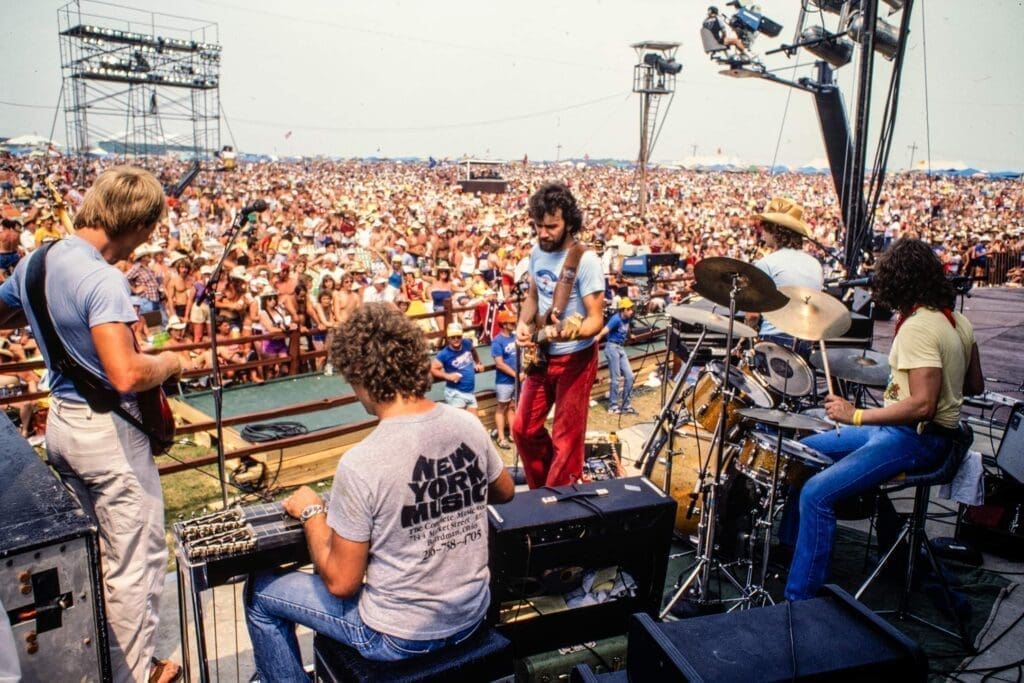
“I can remember when that hiatus announcement was made, some people panicked because of the amount of sales tax that was generated during the week of the event,” recalled JP Dutton, one of three Belmont County commissioners. “And trust me; the budget did take a hit, and some changes had to take place because of the loss of that revenue. It wasn’t deadly, thankfully, but it did cause some changes.”
Jamboree in the Hills was an instant success, and when the festival moved a few miles west on U.S. 40, more than 100,000 country music fans gathered during the multi-day event.
“When I look at that (aerial) shot today, it reminds me of the aerial photos I’ve seen of Woodstock,” Burke said. “I believe it was law enforcement that gave me a ride in the helicopter so I could take some aerial shots. It was very different to see what was going on down there from the air because it just looked like a lot of people on a farm.
“The original venue for Jamboree was a pretty simple place mostly because people brought in their own beers and food for the most part,” he said. “I know it got more involved later on, but it was hot, and there were a lot of people out there just enjoying their country music.”
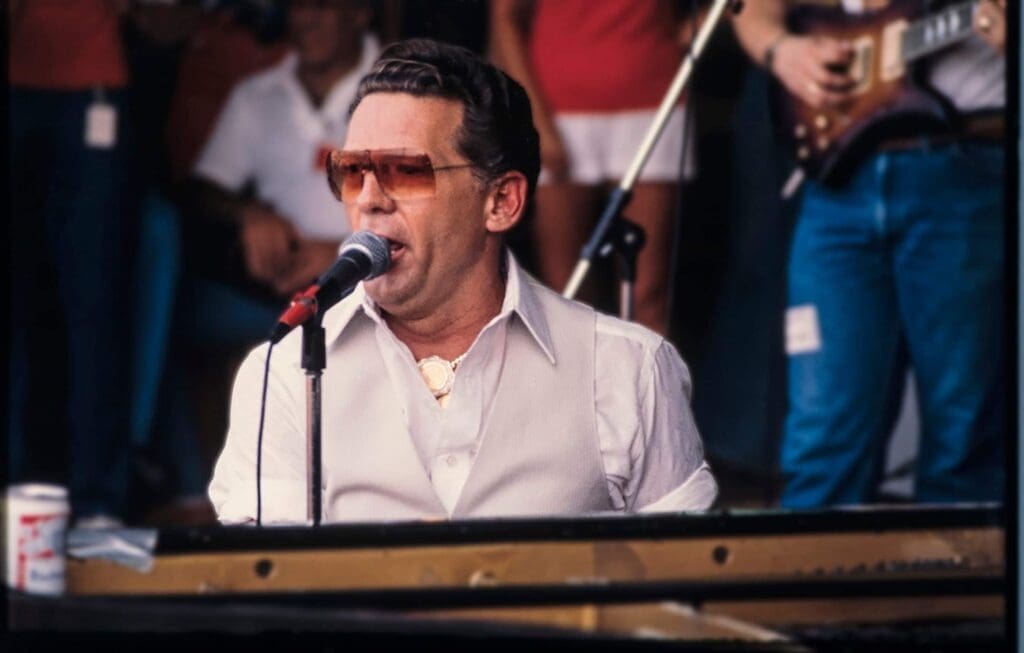
And yes, those fans brought their own supplies, and they did what was necessary to get those provisions on the premises.
“When I saw a person bringing in a keg of beer on a red wagon, I had to take a picture of it because I had never seen that before,” Burke said. “If you were there, you saw a lot of things you had never seen before because folks were just figuring out how to do things they had never done before. I had to give a lot of the shots I took during those years to the client, but I did keep some of them for myself, and that’s one of them.
“A lot of these (photo) slides have been sitting in a box for a lot of years, but because of what it was and how long the event continued, I thought it was time to bring them out for people to see how it all started,” he said. “When you do jobs like these, you don’t realize at the time what some of these photos could mean to people until it’s decades later. So, I hope people enjoy seeing them now.”
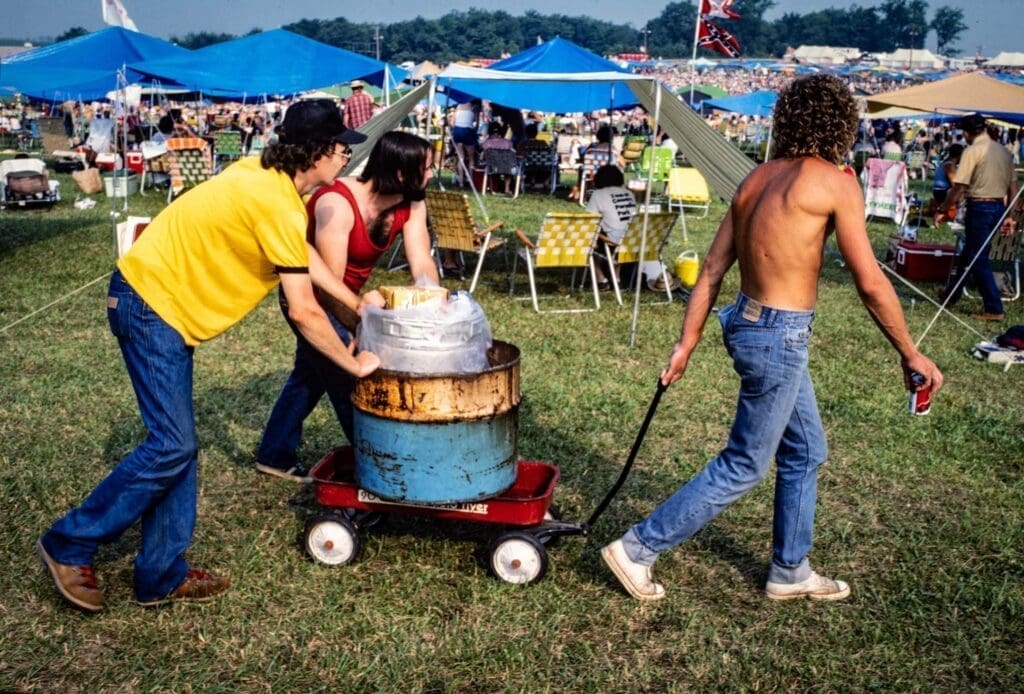
That Third Weekend
The Old Farmer’s Almanac has for decades predicted the hottest, driest days of the day are those included in the third weekend of July.
That prediction, however, has not always proved true.
“I can remember going out there, and it was raining in the morning, and it ended up raining all day long,” recalled Joseph Heatherington, a former Belmont County resident who now lives in Wheeling. “Most years, it has been hot and sunny, but it’s been a real mess sometimes, too.
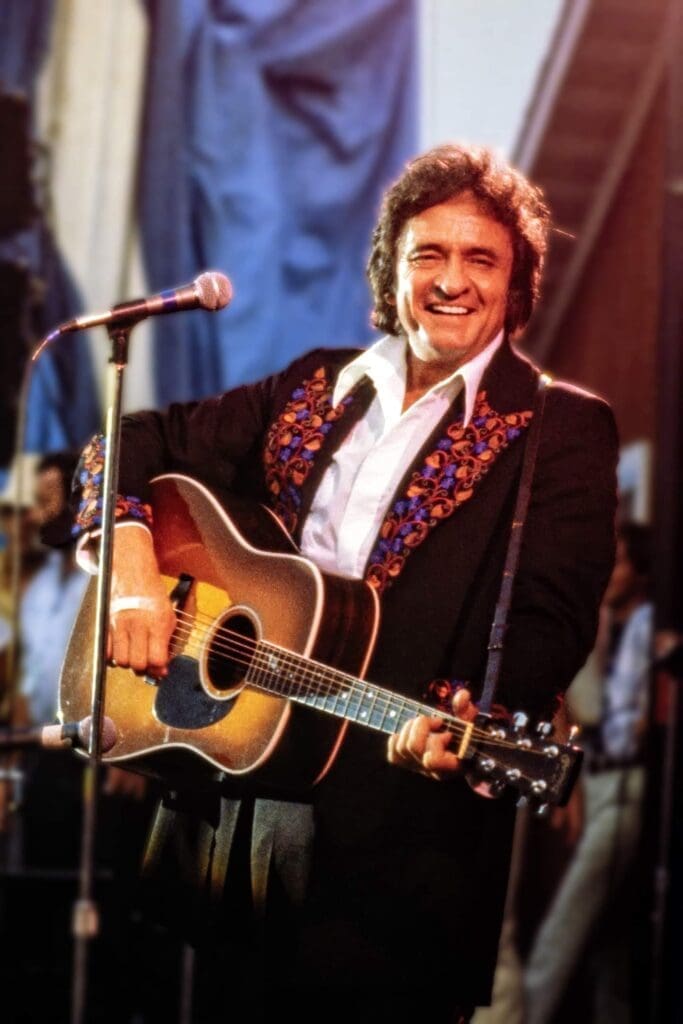
“No matter what, though it’s been a weekend we’ve looked forward to all year long because you could just go there and forget about the rest of the world for a while,” he said. “I’m not even that big of a fan of country music, but I am a fan of being outside, enjoying some beers, and not worrying about work for a day or two.”
Burke, a 1971 graduate of Wheeling College who now lives in the Washington, D.C., area, was the official JITH photographer for the initial six years (1977-1982). Most of the time, he would snap his photos on or near the stage, but he would also venture into the crazed crowd.
“And it was pretty crazy, for sure. I don’t know how those fans did it. The assignment called for me to be there from dawn to dusk, and certain groups that were up front would yell out of their minds all day long. They were just that excited to see the artists,” Burke reported. “They just sat or stood there for hours in the direct sunlight and had the times of their lives.
“One year it was so hot the firemen had to hose off the fans so they could cool down, and I understand that became a tradition through the years when it was extremely hot,” he said. “I know there was a medical tent where people got treated for heat exhaustion and things like that, and I know that continued, as well.”
